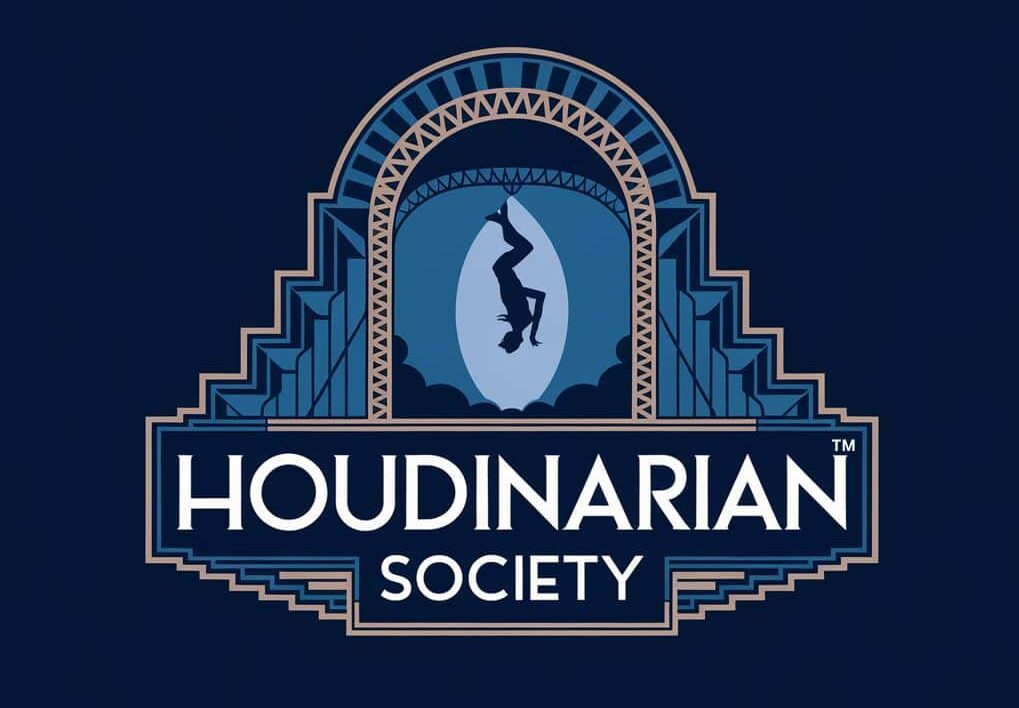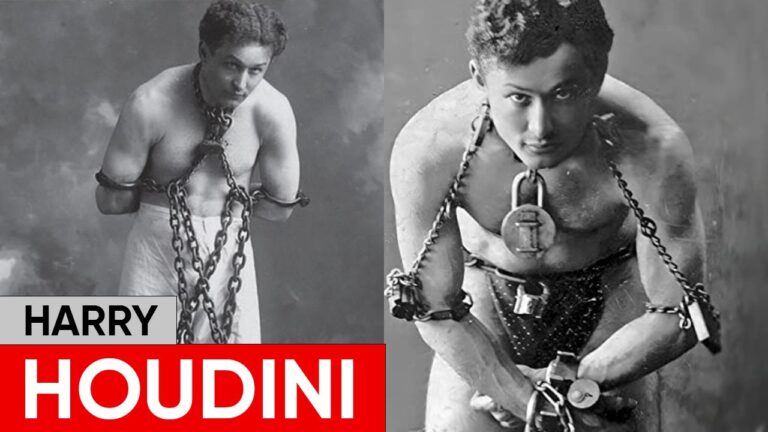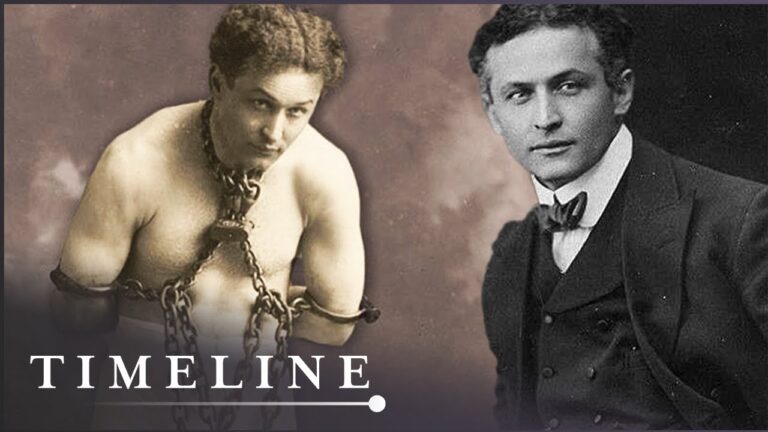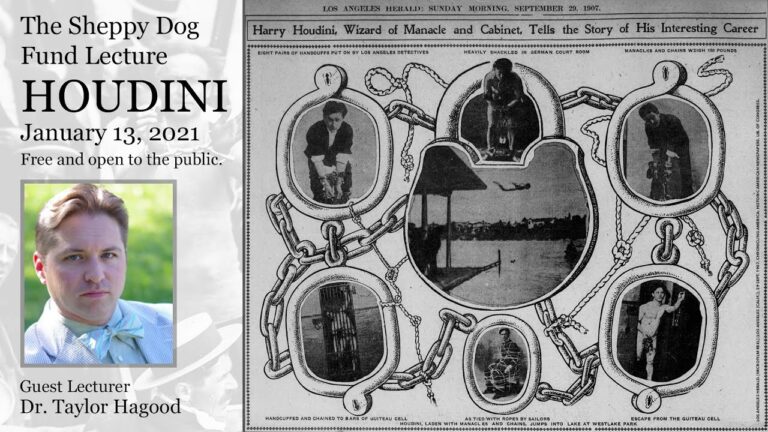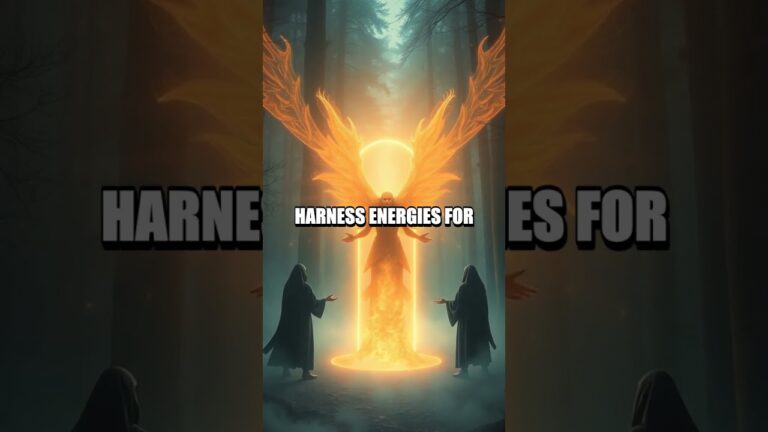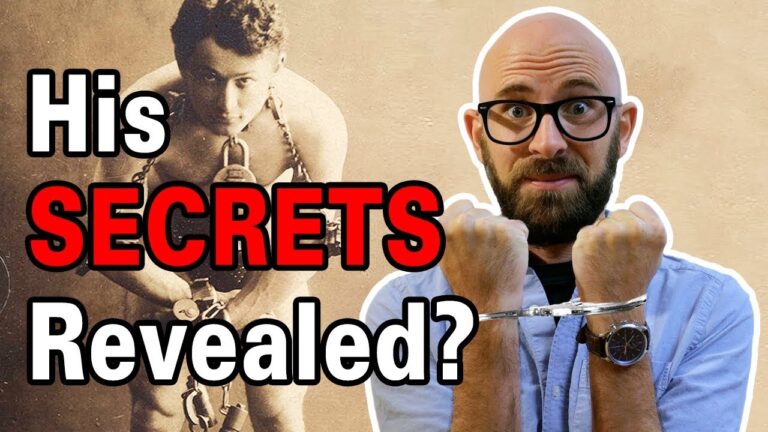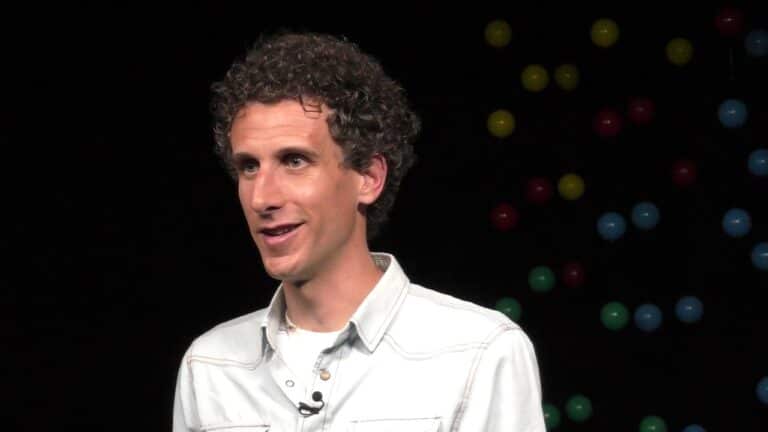The Role of Houdini in Shaping Magic as an Art Form
Harry Houdini revolutionized magic by transforming it from simple tricks into a respected art form. His impact went far beyond his famous escapes – he elevated the entire field of magic through innovation, showmanship, and technical mastery.
Through his pioneering work as a master escape artist and magician, Houdini established magic as a legitimate performance art and created many of the theatrical elements still used by magicians today. You can see his influence in everything from stage design to promotional techniques.
In the 1920s, Houdini took his art in a new direction by exposing fraudulent mediums and psychics. This crusade helped separate genuine theatrical magic from fake supernatural claims. His dedication to advancing magic as pure entertainment, rather than mystic power, gave the art form new credibility with the public.
Houdini’s Early Career and Background

Harry Houdini’s rise from humble beginnings to worldwide fame involved a mix of natural talent, endless practice, and bold innovation. His early experiences shaped his eventual path to becoming one of history’s most influential magicians.
Early Life and Initial Forays into Magic
Born Erik Weisz in Budapest in 1874, young Houdini moved with his family to Wisconsin before settling in New York City in 1882. At just nine years old, he gave his first public performance as a trapeze artist.
The family’s poverty pushed him to seek ways to support them. He shined shoes, delivered newspapers, and performed in small shows under the name “Ehrich the Prince of the Air.”
He chose the stage name “Harry Houdini” as a tribute to French magician Jean Eugène Robert-Houdin. This decision marked his serious commitment to magic as a career.
Transition from Sideshow Performer to Headliner
Houdini spent years performing at dime museums and sideshows. His early acts included card tricks and traditional magic routines.
His breakthrough came when he started focusing on escape acts. These stunts set him apart from other performers and caught the public’s attention.
His wife Bess joined his act as a stage assistant in 1894. Together, they created the “Metamorphosis” illusion – a lightning-fast exchange of places between performers in a locked trunk.
Key Influences and Inspirations
Perseverance and ingenuity marked Houdini’s approach to magic. He studied locksmithing, contortionism, and sleight of hand to perfect his craft.
The competitive world of vaudeville taught him the value of publicity. He learned to create dramatic presentations that would attract audiences and press coverage.
He drew inspiration from circus performers’ physical abilities and magicians’ mental skills. This combination helped him develop his unique style of entertainment.
His father, a rabbi, instilled in him a strong work ethic. This drove him to practice for hours each day, perfecting every movement and technique.
Pioneering Theatrical Techniques

Harry Houdini transformed magic from simple tricks into sophisticated theatrical productions through innovative staging, dramatic storytelling, and cutting-edge technology.
Development of Signature Escapes
The Chinese Water Torture Cell became Houdini’s most famous escape act. You can see how he hung upside-down in ankle stocks, suspended over a tank of water, creating unbearable tension in the audience.
His handcuff escapes grew more complex with each performance. He would invite police officers to bring their strongest restraints, turning simple tricks into dramatic challenges.
The Milk Can Escape showed his genius for building suspense. He would take deep breaths before being locked inside a water-filled milk can, making the audience count every second until his emergence.
Innovations in Stagecraft and Presentation
Houdini mastered the art of theatrical elements and preparation. His performances included:
- Dramatic lighting effects
- Musical accompaniment
- Carefully timed reveals
- Strategic audience participation
He introduced the pre-show examination of props, letting spectators inspect his equipment. This added credibility and heightened anticipation.
His wife Bess played a crucial role, acting as his assistant and adding emotional depth to performances.
Use of Technology and Special Effects
Houdini embraced new technology to enhance his shows. He experimented with early films to reach wider audiences.
His innovative use of specially designed props set new standards for magic performances. These included:
- Custom-built escape tanks
- Modified handcuffs
- Hidden release mechanisms
- Trap doors with unique locking systems
He pioneered underwater escapes using specially designed glass tanks. These acts required both technical expertise and physical endurance.
Marketing Genius and Publicity Stunts

Harry Houdini revolutionized entertainment marketing through bold publicity stunts, masterful media manipulation, and meticulous brand-building that captured public imagination in ways never seen before in show business.
Mastery of Public Relations
Houdini turned media manipulation into an art form, controlling his public image with precision. He sent regular press releases to newspapers and cultivated relationships with journalists.
Before arriving in a new city, he would challenge local police departments to lock him up in their strongest cells. This generated massive free publicity and packed his shows.
His promotional tactics were groundbreaking – he regularly performed free outdoor stunts that drew thousands of spectators and guaranteed newspaper coverage.
Iconic Public Escapes and Their Impact
The suspended straitjacket escape became his signature stunt. Dangling from skyscrapers while escaping, Houdini created unforgettable spectacles that stopped traffic in major cities.
His underwater escapes pushed the boundaries of publicity stunts. The milk can escape and Chinese water torture cell generated enormous buzz and suspense.
Each public stunt was strategically planned to maximize press coverage and word-of-mouth advertising. The more dangerous the escape seemed, the more tickets he sold.
Building a Personal Brand
Houdini crafted a distinctive persona as the “Handcuff King” and “Self-Liberator.” His marketing materials emphasized themes of defiance against authority and triumph over impossible odds.
He protected his brand fiercely, suing imitators who copied his tricks or used his name. This helped maintain his mystique and market value.
His autobiography and films further cemented his legendary status. Every aspect of his public presence reinforced his image as an unbeatable escape artist.
Influence on Stage Presentation
Houdini transformed magic shows from simple tricks into elaborate theatrical productions that captured audiences’ imagination and set new standards for showmanship.
Theatrical Elements in Houdini’s Performances
His dramatic presentation style turned each escape into a thrilling narrative. You would see him build tension by examining chains and locks before being restrained, making every moment count.
He added spotlights, music, and carefully timed reveals to create suspense. His wife Bess often played key roles in the performances, adding another layer of drama.
Houdini’s famous Water Torture Cell exemplified his theatrical genius. He would hang upside down, ankles locked, above a tank of water – the audience could see his every move through the glass sides.
He made physicality and showmanship central elements of magic performance. His muscular displays and death-defying stunts kept viewers on the edge of their seats.
Collaboration with Other Performers and Artists
Houdini worked closely with theater designers to create custom props and staging. These collaborations led to innovative mechanical devices that enhanced his performances.
He partnered with early filmmakers to capture his escapes on camera, bringing magic to new audiences. His 1919 film “The Grim Game” featured real aerial stunts.
Artists and photographers helped craft his iconic posters and promotional materials. These vivid images became an essential part of magic marketing.
Evolution of Magic Shows Post-Houdini
Modern magicians still use many staging techniques Houdini pioneered. You can see his influence in the way performers interact with their audiences and build anticipation.
Contemporary magic shows incorporate multimedia elements while maintaining the theatrical foundation Houdini established.
Television magic specials follow his format of creating spectacle and drama around each illusion. The combination of danger, skill, and showmanship remains central to magic performance.
His approach to publicity and marketing set standards that today’s performers still follow. Magic shows now routinely feature elaborate sets, dramatic lighting, and carefully crafted personas.
Professional Standards and Ethical Practice
Harry Houdini played a pivotal role in establishing magic as a respected profession through strict ethical codes and standards. His dedication to exposing fraud while protecting legitimate magic created lasting guidelines that shape modern magic practices.
Establishment of Ethical Guidelines in Magic
As president of the Society of American Magicians, Houdini created strict rules about revealing magic secrets to the public. You can see his influence in the way magicians today protect their craft.
He insisted that magicians must never claim supernatural powers. Your ability to perform magic should rest on skill and showmanship, not false claims of mystical abilities.
Professional magicians had to sign agreements promising not to expose other performers’ methods. This practice helped build trust within the magic community.
Role in Exposing Fraudulent Spiritualists
Houdini spent significant time conducting artificial séances to demonstrate how fake mediums fooled people. You would find him attending spiritualist meetings undercover to gather evidence.
He drew clear lines between entertainment magic and fraudulent claims of supernatural powers. Your understanding of this distinction helps protect vulnerable people from scams.
He published detailed exposés of common tricks used by fraudulent mediums. This work helped the public recognize genuine entertainment from deception.
Contributions to the Magicians’ Community
His innovative methods transformed magic from simple tricks into theatrical masterpieces. You can see his influence in modern magic shows.
He created a system for protecting magic secrets through copyright. Your rights as a magician today stem from his pioneering legal work.
He established professional networks and organizations that still support magicians. These groups help you connect with other performers and maintain high standards.
He mentored young magicians and shared knowledge within the magic community. This tradition of selective teaching continues in magic schools today.
Lasting Impact on Modern Entertainment
Harry Houdini’s influence reaches far beyond his era, shaping how magic is performed and presented today. His innovative approach to showmanship and marketing created lasting changes in entertainment that continue to inspire performers and captivate audiences.
Houdini’s Legacy in Contemporary Magic
Magic shows today reflect many elements that Houdini pioneered. His dramatic escape performances set new standards for theatrical presentation in magic.
You can see Houdini’s influence in the way modern magicians combine physical skills with psychological manipulation. His techniques for building suspense and engaging audiences remain fundamental to magic performances.
Television magic specials and Las Vegas shows still feature variations of Houdini’s most famous tricks, like the Chinese Water Torture Cell and the Milk Can Escape.
Influence on Modern Magicians and Performers
Many of today’s top magicians directly credit Houdini as their inspiration. Houdini’s commitment to pushing physical limits has inspired performers to create increasingly spectacular illusions.
Modern magicians follow Houdini’s example by building a strong personal brand. They also use publicity stunts to generate interest, incorporate elements of danger, and challenge skeptics publicly. His approach to self-promotion and media relations created a template that successful performers still follow today.
Cultural Recognition and Homages in Popular Media
Museums and art exhibitions regularly celebrate Houdini’s contributions to entertainment and popular culture. His name has become synonymous with escape artistry and magical excellence.
Films, books, and TV shows frequently reference Houdini’s work. His life story has been adapted into numerous movies and documentaries.
Video games and virtual reality experiences now offer players the chance to attempt digital versions of Houdini’s famous escapes, introducing his legacy to new generations.
The Cultural Shift Sparked by Houdini
Harry Houdini transformed magic from mere entertainment into a respected art form that captivated millions. His innovative approach reshaped public perception and established new standards for theatrical performance.
Elevating Magic to Mainstream Artistic Recognition
You can trace Houdini’s impact through his revolutionary presentation style. He turned each performance into a theatrical event, complete with dramatic storytelling and suspense-building techniques.
His dedication to collecting magical artifacts and literature helped establish magic’s historical significance. This preservation effort created a foundation for future generations to study and respect the craft.
He introduced sophisticated marketing strategies that elevated magic shows to the same status as traditional theater productions. His posters and promotional materials became art pieces themselves.
Changes in Audience Perception of Magic
Before Houdini, audiences viewed magicians as carnival attractions. His dramatic escapes and carefully crafted persona changed that perception entirely.
His mastery of publicity created a new type of performer-audience relationship. You could see this in the way crowds became emotionally invested in his death-defying stunts.
He emphasized skill and athleticism over supernatural claims. This approach brought credibility to magic as a legitimate performance art.
Houdini’s Role in the Evolution of Performance Art
His escape acts introduced physical endurance as a key element of magical performance. This fusion of athletics and artistry influenced countless future performers.
Houdini’s dramatic performances set new standards for theatrical presentation. His influence can be seen in modern magic shows that combine multiple entertainment elements.
He pioneered the integration of current events into his acts, making magic relevant to daily life. When he escaped from prison cells or strait jackets, he connected with real-world concerns about freedom and constraint.
His legacy created a blueprint for modern performers who blend various art forms into their shows. This multi-disciplinary approach remains standard practice in contemporary magic.
